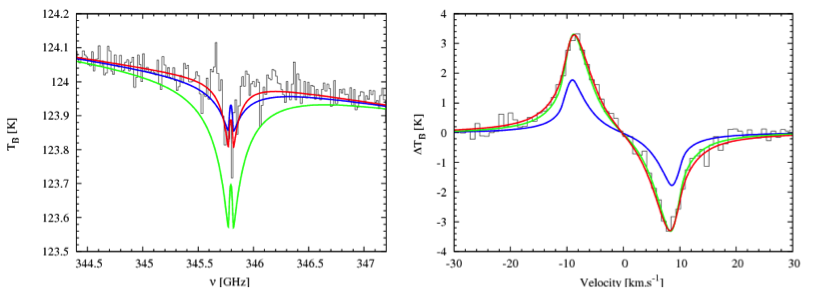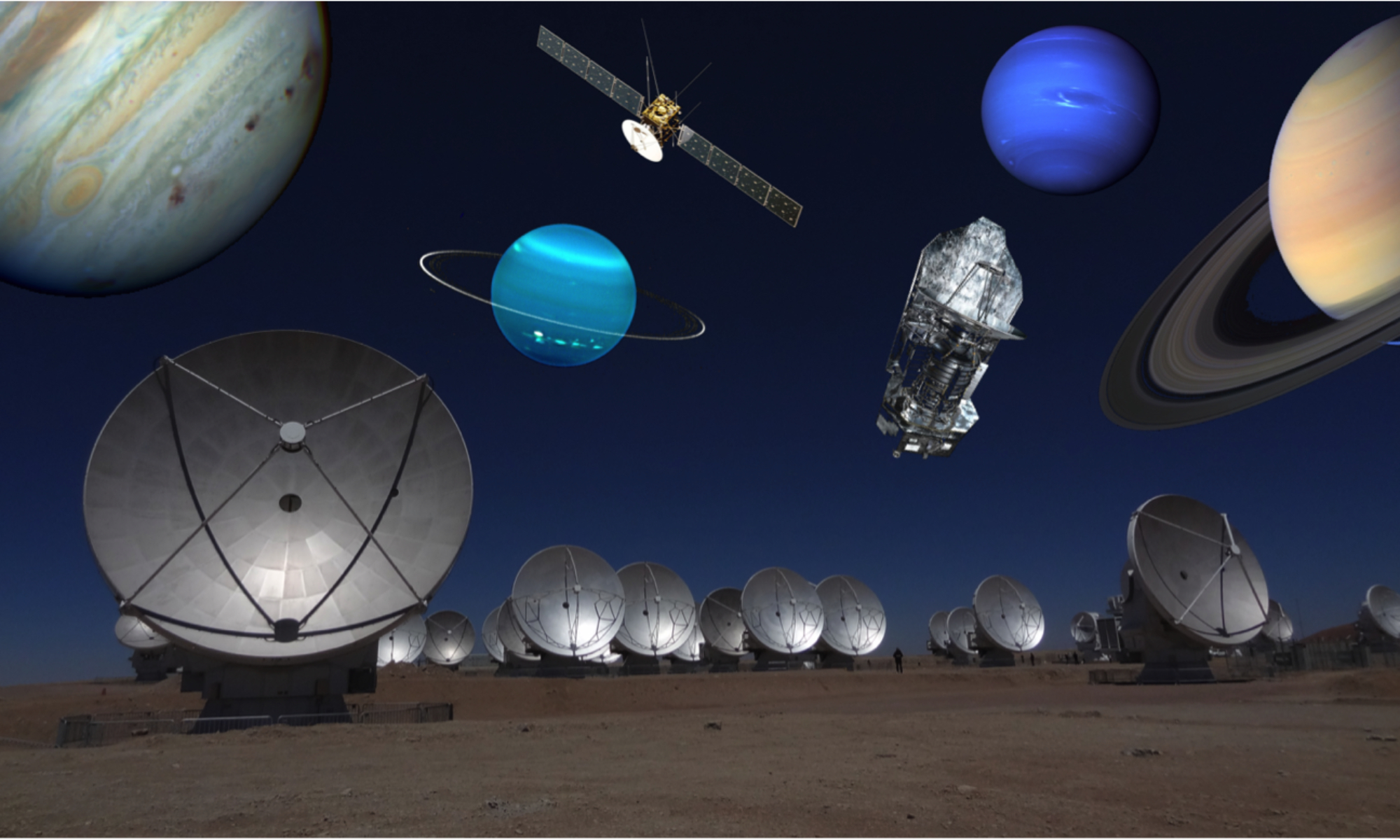Determining the origin of CO in a giant planet stratosphere is more complex than water as this species does not condense at the tropopauses of these planets and can therefore originate not only for external sources (interplanetary dust particles, comets, icy rings/satellites), but also from the deep oxygen-rich interiors of these planets. Studying the origin of CO thus bears implications on the planet formation and on the interactions with their environment. For instance, at Jupiter and Neptune, Bézard et al. (2002) and Lellouch et al. (2005) have demonstrated the dual (internal and external) origin of CO in these planets.
CO was detected in Saturn in 1986 by Noll et al. (1986). Complementary observations of Noll and Larson (1991) could not help to determine the origin of this compound and the question remained open ever since.
Combining James Clerk Maxwell Telescope (JCMT) observations at 345 GHz and 691 GHz and coupling them with 1D vertical transport models, I have shown that CO in Saturn’s stratosphere was probably delivered by a comet impact a few centuries ago.

CO at 345 and 691 GHz in Saturn, as observed with the JCMT. Blue and green lines are steady source (e.g. IDP) models, and none of them can fit both lines. On the other hand, a comet source model fits both observations.
References: Cavalié et al. 2009, Icarus 203, 531-540. Cavalié et al. 2010, Astronomy and Astrophysics 510, A88.
[social_warfare buttons=”Facebook”]

You actually make it seem so easy with your presentation but
I find this matter to be really something that I think I would never
understand. It seems too complicated and very broad for me.
I’m looking forward for your next post, I’ll try to get the hang of it!